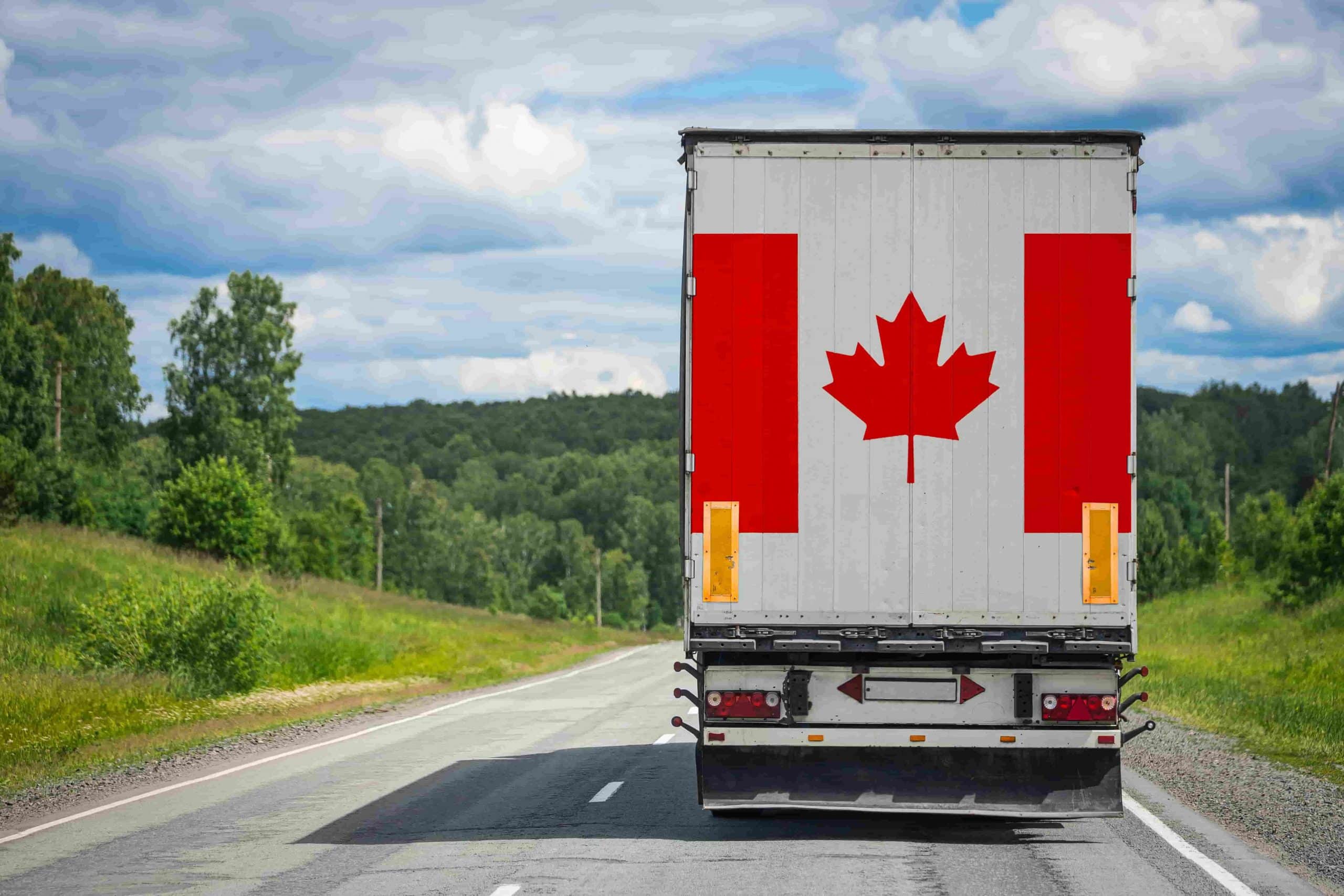
Table of Contents:
E-Commerce Shipping Solutions and Strategies in Canada
Setting Up Your Shipping Rates
Keeping Your Margins Profitable
Turn Your Packaging Into a Marketing Opportunity
Choosing Your E-Commerce Shipping Solutions in Canada
The Types of Domestic Carriers
So you’ve put in the hours and sweat into making sure your business is geared for success. You’ve amassed an impressive portfolio of professional product photos, written a high-quality email copy, as well as an “About Us” page that would make the coldest of hearts melt and potential partners eager to work with you.
One elephant remains standing, the final hiccup before you can finally start popping champagne—it’s your logistics.
When it comes to eCommerce shipping solutions, most owners feel like they’re leaving their beloved brands in the hands of some unknown entity. They can only hope and pray that products arrive at customer’s houses. This does not have to be the case, though. With a bit of strategy and organization, you can confidently ship products on their way without feeling uneasy or left out of the process.
In this ultimate guide, we’ve covered all the ground you’ll need, from strategies to the best tools you can use to manage shipments and consistently hit customer expectations.

Like all things, successful shipping requires a lot of planning, organization, and implementation. So what choices can you possibly make to ensure a seamless shipping system for your business? Although free shipping appears to be the most appealing and easy method to provide, high Canadian rates can quickly destroy your business if you are not careful. Your shipping plan has the potential to make or break your competitiveness. Consider what is essential to your customers, what your competitors are doing, and how much you can afford.
Some typical objectives of your e-commerce shipping plan may include:
Let’s review the best practices and strategies for getting around the eCommerce business:
The straightforward objective is to make shipping rates in Canada profitable for you and affordable for your customers. Common options are to pass on the whole cost to your customers or absorb some of it to offer flat-rate or free shipping. Let’s explain them further:
Most customers will jump at the opportunity to get free shipping, and most online merchants find this to be the best way to improve cart conversions on abandoned items. However, is free shipping truly “free”? Practically, nope. Someone will have to shoulder the cost, whether you, the customer, or the courier. Nevertheless, here are some of the ways and means you can enable free shipping:
Offering Free Shipping is one of the best ways to lure indecisive customers or attract new ones. However, if you’re genuinely confident with your product’s demand, passing it on to the customer is usually the best plan of action.
Shopify, Woocommerce, and other E-commerce platforms offer partnerships with many Canadian domestic couriers. These usually come in the form of plug-ins, which you can upload directly to your store page. These plug-ins allow your customers the freedom to choose from a wide variety of options instead of showing them a pre-calculated cost on the checkout page.
Local deliveries are an excellent strategy for online stores looking to offer easy and convenient shipping to their local customers. To limit your delivery zone, you may choose a radius or a list of zip/postal codes when setting up local delivery. Customers located in your selected delivery zone will have the option to select “local delivery” as a shipping method when making a purchase. Offering free or discounted local delivery beyond a certain order amount might help you save money on shipping while also enticing more local customers.
With the in-store pickup, you avoid shipping altogether while still providing excellent customer care. You may enable the “local pickup” option in your eCommerce platform, which allows your customers to pick up their orders from you in person. This is most effective if you have both an e-commerce and a physical business. You’ll cut shipping price and cost, and customers will have the option of picking up their orders faster at the local store.
Customers may be more encouraged to visit your site and may return in the future if you provide a discount for local pickups. And don’t worry about profitability; you can always upsell and encourage them to spend even more when they come to pick up the items.
Fixed-rate shipping is often the most convenient option because the exact amount is charged regardless of order weight or size. This is most appropriate if your items are comparable in size and weight or if the bulk of your consumers purchase similar quantities. If not, you risk overpricing and losing customers or undercharging and losing profits.
Customers value flat rate shipping for the same reason that company owners do: it is easy and obvious, removing the guesswork from determining costs.
Additionally, you may opt for flat rate shipping in your marketing strategies. A statement like “Shipping is always $5.00” has a natural appeal because of its simplicity and clarity. It may inspire consumers to acquire more goods without worrying about high shipping charges.
Table rates employ a set of criteria to determine shipping rates depending on factors such as weights and sizes, shipping classes, order totals, destinations, and the number of products ordered. As a result, they provide the most excellent customization possibilities and are especially useful if your catalog is highly variable in shape, size, or type.
Here are some scenarios of rules you can apply:
If you can’t decide which shipping technique to utilize, mix and combine them to find the best fit for your company.
One typical technique is to provide free delivery for purchases that meet a specific total. For example, you may charge a flat fee for orders under $50 and provide free shipping for over $50. If your typical order size is $30, this strategy may be wise; it encourages customers to add more to their carts while preventing you from losing money on shipping expenses.
If your order sizes, product weights, and prices vary, you may provide free shipping for USPS Ground only and compute real-time charges for quicker delivery choices.
As part of a more comprehensive marketing plan, you may also provide free delivery for a short period. If you typically charge for shipping, this is an excellent method to boost sales during a specific holiday or time of year.
Another aspect of accurate shipping rate calculation is the packaging. As a rule of thumb, the more compact the package, the less you’ll pay for shipping. But this isn’t a green light to compromise on packaging. Instead, aim for a balance between compactness and durability so your product can arrive at the customer’s door in one piece.
Couriers usually base the price on how much the product weighs or how much space it takes on their vehicles. The space taken up by the item or its volumetric or dimensional weight is calculated by multiplying the package’s length, width, and height and dividing it by a cubic divisor. Courier services will usually compare the cost between the dimensional and the weight, charging you with whatever’s higher. There are a wide array of standard packaging options you can choose from, depending on the product you’re selling:
Most couriers charge based on size and/or weight, so you have to keep your packing as small and light as possible. This will not only save you money on shipping and how much your customers pay, but it will also minimize the effect packing expenses have on your profit margins.
Depending on your company and product line, you might wish to stock various container sizes and packing materials.
Most store owners don’t take margins seriously enough, and by serious, we’re talking details. So before finalizing your shipping strategies and choosing your couriers, it’s best to determine first if you’re going to make a buck in the process.
A company’s gross margin determines how much money it keeps after deducting the costs of producing the product it sells and/or providing the service. The gross margin is the difference between its revenue and its cost of goods sold (COGS) divided by its revenue. It is shown as a percentage.
The gross margin formula is as follows:
| Total Revenue / (Total Revenue – Cost of Goods Sold) |
Let’s look at it practically: Assume you have a product that costs $20.00 to make, $8.00 to transport and $5.00 to package appropriately. Your total cost, less any profit, is $33.00.
To achieve a 40% profit margin, you must charge the customer a total price of $46.20. As an example, you might offer the goods for $38.20 plus $8.00 for delivery. Offering free delivery reduces your profit margins to 15%. You may also charge consumers a percentage of the delivery fees, putting you somewhere in the center.
The higher a company’s gross margin, the more revenue it gets for every penny earned. Higher margins might indicate whether or not your firm is profitable and whether or not sales are up.
By now, you should be asking yourself, “What’s a good number for profit margins”? The best profit margins depend on a lot of variables like your location, niche, and others. Retailers, in general, show the lowest profit margins compared to other industries. However, the rise of eCommerce has pushed up the retail margins for most store owners. As a general rule, a 10% margin is a decent average to aim for, with 20% being “excellent” and 5% being “low.”
The best way to achieve your profit margin is to reduce your Cost of Goods (COGs) or other business expenses, which is usually achieved by increasing economies of scale or outsourcing some processes like packaging or lead generation to ultimately increase your business’ efficiency profitability.
The expectations of online buyers evolve along with the world of eCommerce. In the past, packaging and shipping were just methods of acquiring a product bought online; but, as the online shopping experience advances, buyers increasingly seek reasonable shipping, good packaging, and presentation. Outside of selling, this expectation implies that for many brands, competing effectively requires going above and beyond to bring that “WOW” factor and surpass their expectations by offering an experience of nostalgia, not simply a product.
Small details like these go a long way toward making a lasting impact on customers in a world where sealed factory bags and black-and-white purchase receipts are the norms. Today’s most successful and intriguing businesses are those that use packaging to provide an unpacking experience that extends beyond the product.
Consider how your packaging can improve the consumer experience and utilize it as your brand’s extension.
Insuring your products gives your business some leeway for when the worst-case scenarios occur. In addition, insurance and tracking are reasonably affordable with most carriers and offer you a payout if one of your goods is lost or damaged.
It is critical to recognize which goods are and are not insurable. If the insurance provider does not insure what you are delivering or the shipment destination, it may be prudent to consider using unbranded, well-packaged boxes to avoid theft. Every carrier and insurance provider has Terms of Service that outline their limitations. This will save you from the hassles that might result from rejecting claims for insurance packages that contradict company policies.
After reading the terms and conditions of the policy, you should generally evaluate two crucial facts: The estimated possibility that your goods will be damaged or stolen and the value of the item. Following an assessment, you should be able to decide whether or not your items require insurance.
Records of previous shipments that were lost or damaged are another excellent approach to determining insurance requirements. If you are experiencing more than usual difficulties with your shipments, it’s a good move to calculate the figures and determine whether the expense of additional coverage is worthwhile.
In the previous section, we’ve discussed in detail the best shipping methods and strategies to help you achieve your business goals. With that over with, it’s time to decide who should handle your shipping as well as how to choose them. Firstly, we’ll touch on the common domestic solutions available on the market.
Some postal couriers include the United States Postal Service (USPS), Singapore Post, Hong Kong Post, Canada Post, and Australia Post.
In many situations, postal couriers provide cost-effective pricing, making them the first choice for eCommerce brands looking for economical and reliable delivery solutions.
An express courier is a private firm that specializes in time-pressured parcel shipping companies in Canada. Because these couriers typically provide faster parcel delivery services in Canada with all the bells and whistles (such as regular tracking updates and greater delivery flexibility), their price is higher and influenced by more factors.
Regional couriers, as the name implies, are shipping firms that only deliver inside a specific region. Finding a reputable regional courier that serves the locations you need might give you the best of both worlds, as they may offer more competitive prices than express couriers and faster services than a postal courier.
It can be challenging to pick the best domestic container shipping companies in Canada for your business with the vast array of options available in each category. However, you can use this to your business’s advantage by, again, mixing and matching all the options into a convenient package your customers can choose from. Here are some of the advantages of diversifying your domestic shipping options.
When delivering domestically, consider partnering with various reputable carriers who can satisfy your delivery demands based on your customer’s location and delivery time expectations.
As shipping expectations vary with each customer, it’s best to have three shipping alternatives, each with an emphasis on one of the following:
Stallion Express is a shipping solution that offers plenty of features for small to medium-sized companies. It doesn’t cost a dime to sign up for an account, plus you can generate shipping labels or submit manifests on the website before you drop it off at any of their locations or schedule a pickup. Domestic services cover anywhere between Vancouver to Montreal. In addition, Stallion Express offers one of the most competitive rates on the market, allowing you to save up to 40% on nationwide shipping with a full tracking service from drop-off to the customer’s front doors.
The usual lead time for delivery is 2-8 business days. Stallion Express also makes it convenient to organize a seamless shipping system by integrating with common online store platforms like Amazon, Shopify, Etsy, or eBay so you can manage and track all orders in one place.
Shipping is undoubtedly a challenging component of any online operation. Time plus a bit of experimentation is needed to determine what works effectively for your new eCommerce site, as it will for several other aspects.
Understanding all of the variables and adapting your shipping plan as your company grows is critical to its long-term health and profitability. So, if you think you’ve got it figured out, don’t throw it away. Instead, reevaluate every six months to ensure you’re giving your clients the best service and experience possible at the best value. Partner with Stallion Express for more straightforward domestic solutions that won’t break the bank!


Can our fellow Torontonians relate?
-
#smallbusiness #business #entrepreneur #socialmedia #shipping #ecommerce #canadianecommerce #shopify #poshmark #b2b #saas #etsy #ebay #canada #canadiansmallbusiness #shoplocalcanada #entrepreneur
#toronto

Here’s your quick hassle free shipping from 🇨🇦 to 🇺🇸 as a business owner!
-
Any questions?! Leave them 👇🏻 and save this video so you don’t forget!
-
#smallbusiness #business #entrepreneur #socialmedia #shipping #ecommerce #canadianecommerce #shopify #poshmark #b2b #saas #etsy #ebay #canada #canadiansmallbusiness #shoplocalcanada #entrepreneur

Meet @drinkbenny a 🇨🇦 female founded energy drink brand! Instead of focusing on their products, they’re taking a unique approach by hosting in person events in different Canadian cities to offer an experience for their community 🧡
-
What are your thoughts on in person events? 💭
-
#smallbusiness #business #entrepreneur #socialmedia #shipping #ecommerce #canadianecommerce #shopify #poshmark #b2b #saas #etsy #ebay #canada #canadiansmallbusiness #shoplocalcanada #entrepreneur

Do you know the difference between DDU and DDP when shipping internationally 🌏 ?
-
Questions? Leave them below! 👇🏻
-
#smallbusiness #business #entrepreneur #socialmedia #shipping #ecommerce #canadianecommerce #shopify #poshmark #b2b #saas #etsy #ebay #canada #canadiansmallbusiness #shoplocalcanada #entrepreneur

Here’s a quick hack to save time from choosing multiple postage options
↪️ Turn on the lowest postage rate automation to save you time!
-
Questions? Leave them below! 👇🏻
-
#smallbusiness #business #entrepreneur #socialmedia #shipping #ecommerce #canadianecommerce #shopify #poshmark #b2b #saas #etsy #ebay #canada #canadiansmallbusiness #shoplocalcanada #entrepreneur
